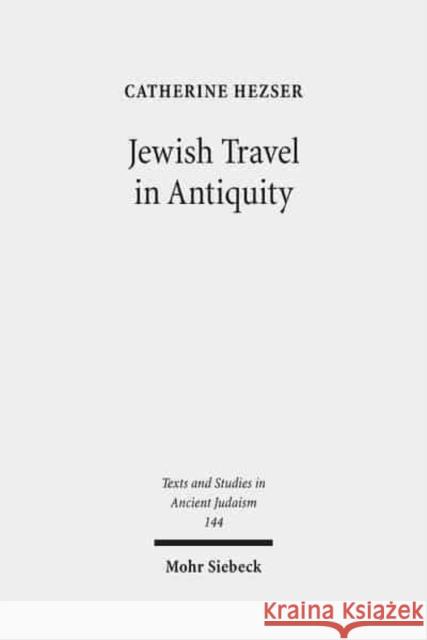Jewish Travel in Antiquity » książka
Jewish Travel in Antiquity
ISBN-13: 9783161508899 / Angielski / Twarda / 2011 / 529 str.
This book provides the first comprehensive study of Jewish travel and mobility in Hellenistic and Roman times, based on a critical analysis of Jewish, Graeco-Roman, and early Christian literary, epigraphic, and archaeological sources and a social-historical evaluation of the material. Catherine Hezser shows that certain segments of ancient Jewish society were quite mobile. Mobility seems to have increased in the later Roman period, when an extensive road system facilitated travel within the province of Syria-Palestine and the neighbouring Middle Eastern regions. Second Temple Judaism was centralized, with Jerusalem as its central space and seat of priestly authority. In post-70 rabbinic Judaism, on the other hand, connections between rabbis could be established through mutual visits and second- and third-degree contacts only. Mobility formed the basis of the establishment of a decentralized rabbinic network in Palestine and Babylonia in late antiquity. Numerous narrative and halakhic traditions indicate the importance of mobility for communication and the exchange of knowledge amongst rabbis. It is argued that the rabbis who were most mobile sat at the nodal points of the rabbinic network and elicited the largest amount of influence. They would have combined business travel with scholarly exchange. Scholars' journeys between Palestine and Babylonia are viewed within the wider context of Rome and Persia's economic and cultural exchange in which Jews, just like Christians, may have played the role of intermediaries.
Catherine Hezser examines the significance of mobility in Second Temple and rabbinic Judaism within the wider context of travel in the Roman Empire and the Middle East. She analyzes Jewish narrative and legal traditions referring to travel in the context of ancient travel literature and on the basis of the material reality of travel in the Land of Israel. The author argues that mobility became especially important after 70 C.E., when rabbinic networks emerged in Roman Palestine and Sasanian Babylonia. The decentralized nature of these networks made mobility the basis of contacts, communication, and the transmission of legal and exegetical knowledge amongst rabbis. Mobility determined rabbis scope of influence and power amongst their coreligionists. Jewish travel between Palestine and Babylonia is examined within the framework of economic and cultural exchange between Rome and Persia in late antique and early Byzantine times.











